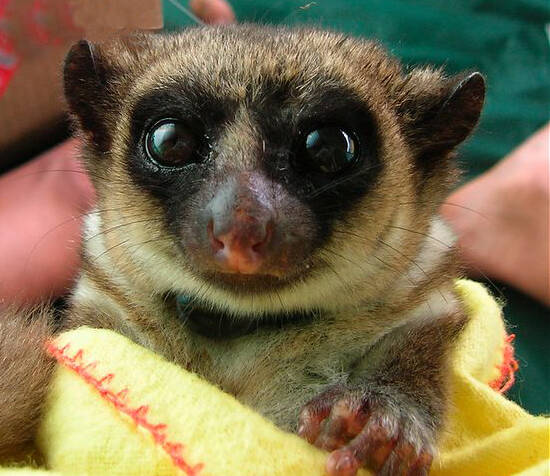Cheirogaleus sibreei
IUCN
LCBasic Information
Scientific classification
- name:Cheirogaleus sibreei
- Scientific Name:Cheirogaleus sibreei,Sibree's Dwarf Lemur
- Outline:Primates
- Family:Lemuridae Lemuridae
Vital signs
- length:16.7-26.4cm
- Weight:164-600g
- lifetime:About 10 years
Feature
Tail longer than body
Distribution and Habitat
The Sisinjoarivo mouse lemur is found only in the Parc national de Ranomafana and Antsiranana (Tsijoarivo) in Madagascar. In Ranomafana it lives at high altitudes in Mount Maharira (1400 m), and also in the northern half of the park near Miaranony. In Sinarivo, Sicily is probably restricted by the corridors of the Onive and Mangoro rivers, the Anjozorobe, and the western half of the Tsinjoarivo forest at an altitude of more than 1400 m. The distribution range is between 50-2500 km2, occupying an area of less than 10 square kilometers.
It inhabits tropical rainforests or dry forests or scrublands, and some live in bamboo forests, reed areas or forestless mountains.
Appearance
The body length of the lemur is 167-264 mm; the tail length is 195-310 mm; the weight is 164-600 grams. The tail is dense and long, in the shape of a club; the eyes are large, with wide dark circles to the lower snout; the fur is dense and brightly colored; the outer ear shell is semicircular; the hind limbs are longer than the front limbs, the fingers and toes have flat nails, and the second toe has a grooved and curved claw; there are 36 teeth, but the upper incisors are missing.
Details
Sibree's Dwarf Lemur (scientific name: Cheirogaleus sibreei) is active during the day or at night, eating insects, fruits, reeds, leaves, and occasionally birds. It lives alone or in family groups. It hibernates. The gestation period is 120-150 days, and it gives birth from September to November, with one baby per litter. It reaches sexual maturity at 18 months.

Listed in the 2014 Red List of Endangered Species of the World Conservation Union (IUCN) ver 3.1 - Critically Endangered (CR).
Protect wild animals and stop eating game.
Maintaining ecological balance is everyone's responsibility!








